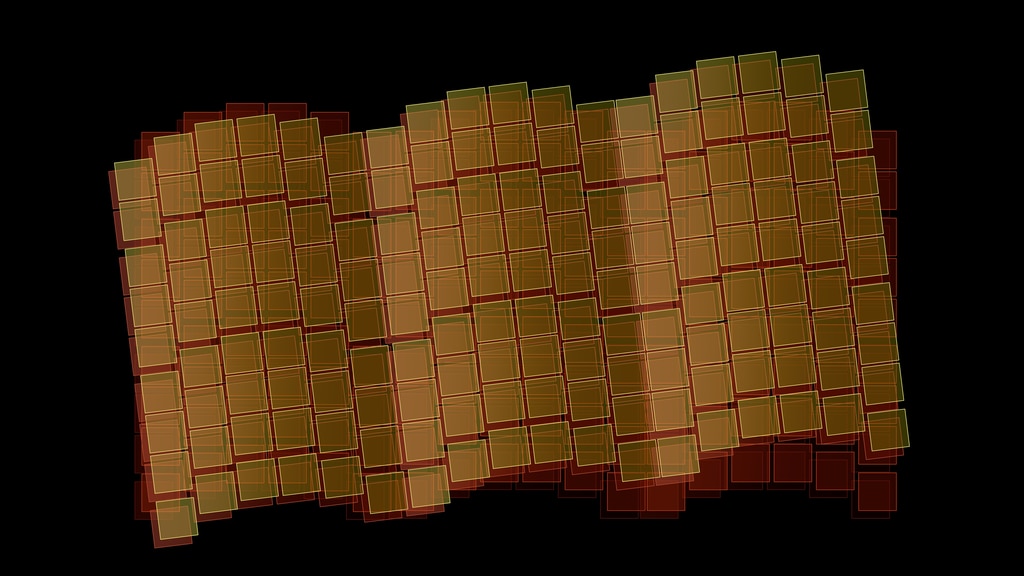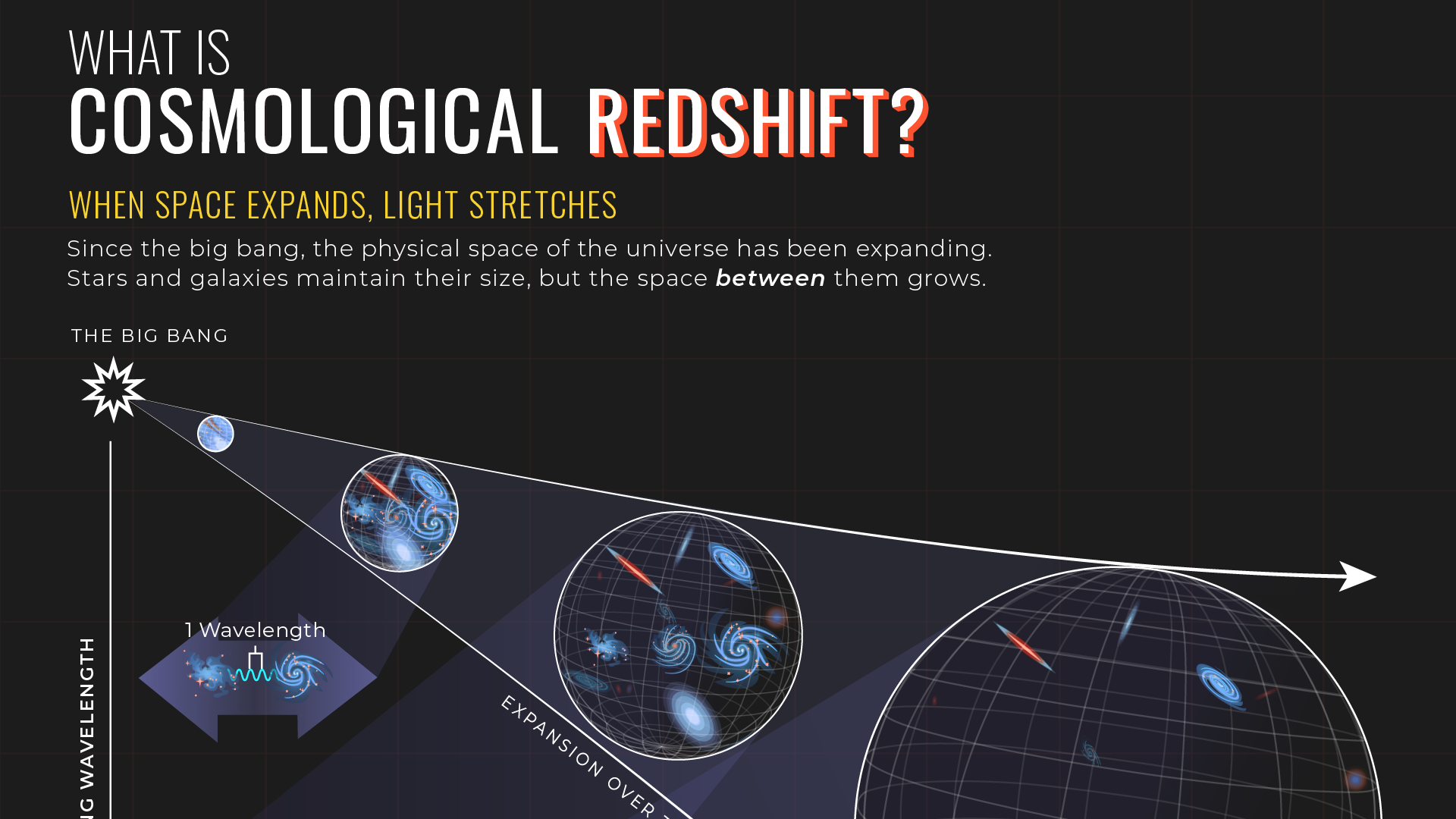Simulated Galaxy Redshift Cubes
This video dissolves between the entire collection of redshift cubes in 55 seconds. A shorter, faster version is available below.
Credit: NASA’s Goddard Space Flight Center/F. Reddy and Z. Zhai, Y. Wang (IPAC) and A. Benson (Carnegie Observatories)
Watch this video on the NASA.gov Video YouTube channel.
Complete transcript available.
These visualizations show the number and clustering of simulated galaxies at different cosmic ages, ranging from 4% to 43% of the universe’s current age of 13.8 billion years. Each cube represents a fixed volume of space about 100 million light-years per side. Over the sequence, the expansion of the universe quickly lowers the density of galaxies. Each cube shows a specific cosmological redshift, from 9 to 1, with earlier cubes cast in redder shades.
The visualizations use data from a realistic simulation developed by Zhongxu Zhai and Yun Wang at IPAC and Andrew Benson at Carnegie Observatories to investigate the expected precison and accuracy of the High Latitude Spectroscopic Survey from NASA’s Roman Space Telescope. The full simulation contains 65 million galaxies.
Same as above but 25 seconds long.
Credit: NASA’s Goddard Space Flight Center/F. Reddy and Z. Zhai, Y. Wang (IPAC) and A. Benson (Carnegie Observatories)
These six cubes show the simulated distribution of galaxies at redshifts 9, 7, 5, 3, 2, and 1, with the corresponding cosmic ages shown. As the universe expands, the density of galaxies within each cube decreases, from more than half a million at top left to about 80 at lower right. Each cube is about 100 million light-years across. Galaxies assembled along vast strands of gas separated by large voids, a foam-like structure echoed in the present-day universe on large cosmic scales.
Credit: NASA’s Goddard Space Flight Center/F. Reddy and Z. Zhai, Y. Wang (IPAC) and A. Benson (Carnegie Observatories)
Watch this video on the NASA.gov Video YouTube channel.
Complete transcript available.
This visualization shows the simulated galaxy distribution at redshift 9, when the universe was just 551 million years old. The cube is about 100 million light-years across and contains 528,000 galaxies.
Credit: NASA’s Goddard Space Flight Center/F. Reddy and Z. Zhai, Y. Wang (IPAC) and A. Benson (Carnegie Observatories)
Same as above but for redshift 8, when the universe was 646 million years old. The cube contains 217,000 galaxies.
Credit: NASA’s Goddard Space Flight Center/F. Reddy and Z. Zhai, Y. Wang (IPAC) and A. Benson (Carnegie Observatories)
Same as above but for redshift 7, when the universe was 771 million years old. The cube contains 110,000 galaxies.
Credit: NASA’s Goddard Space Flight Center/F. Reddy and Z. Zhai, Y. Wang (IPAC) and A. Benson (Carnegie Observatories)
Redshift 6, when the universe was 942 million years old. The cube contains 49,000 galaxies.
Credit: NASA’s Goddard Space Flight Center/F. Reddy and Z. Zhai, Y. Wang (IPAC) and A. Benson (Carnegie Observatories)
Redshift 5, when the universe was 1.2 billion years old. The cube contains 23,000 galaxies.
Credit: NASA’s Goddard Space Flight Center/F. Reddy and Z. Zhai, Y. Wang (IPAC) and A. Benson (Carnegie Observatories)
Redshift 4, when the universe was 1.6 billion years old. The cube contains 9,000 galaxies.
Credit: NASA’s Goddard Space Flight Center/F. Reddy and Z. Zhai, Y. Wang (IPAC) and A. Benson (Carnegie Observatories)
Redshift 3.5, when the universe was 1.8 billion years old. The cube contains 6,500 galaxies.
Credit: NASA’s Goddard Space Flight Center/F. Reddy and Z. Zhai, Y. Wang (IPAC) and A. Benson (Carnegie Observatories)
Redshift 3, when the universe was 2.2 billion years old. The cube contains 4,000 galaxies.
Credit: NASA’s Goddard Space Flight Center/F. Reddy and Z. Zhai, Y. Wang (IPAC) and A. Benson (Carnegie Observatories)
Redshift 2.5, when the universe was 2.6 billion years old. The cube contains 2,500 galaxies.
Credit: NASA’s Goddard Space Flight Center/F. Reddy and Z. Zhai, Y. Wang (IPAC) and A. Benson (Carnegie Observatories)
Redshift 2, when the universe was 3.3 billion years old. The cube contains 1,000 galaxies.
Credit: NASA’s Goddard Space Flight Center/F. Reddy and Z. Zhai, Y. Wang (IPAC) and A. Benson (Carnegie Observatories)
Redshift 1.5, whenn the universe was 4.3 billion years old. The cube contains 400 galaxies.
Credit: NASA’s Goddard Space Flight Center/F. Reddy and Z. Zhai, Y. Wang (IPAC) and A. Benson (Carnegie Observatories)
Redshift 1, when the universe was 5.9 billion years old. The cube contains 80 galaxies.
Credit: NASA’s Goddard Space Flight Center/F. Reddy and Z. Zhai, Y. Wang (IPAC) and A. Benson (Carnegie Observatories)
For More Information
Credits
Please give credit for this item to:
NASA's Goddard Space Flight Center. However, individual items should be credited as indicated above.
-
Data visualizer
- Francis Reddy (University of Maryland College Park)
-
Producer
- Scott Wiessinger (KBR Wyle Services, LLC)
-
Science writers
- Ashley Balzer (ADNET Systems, Inc.)
- Francis Reddy (University of Maryland College Park)
-
Scientist
- Yun Wang (Caltech/IPAC)
Missions
This page is related to the following missions:Series
This page can be found in the following series:Release date
This page was originally published on Tuesday, March 22, 2022.
This page was last updated on Wednesday, May 3, 2023 at 11:44 AM EDT.

